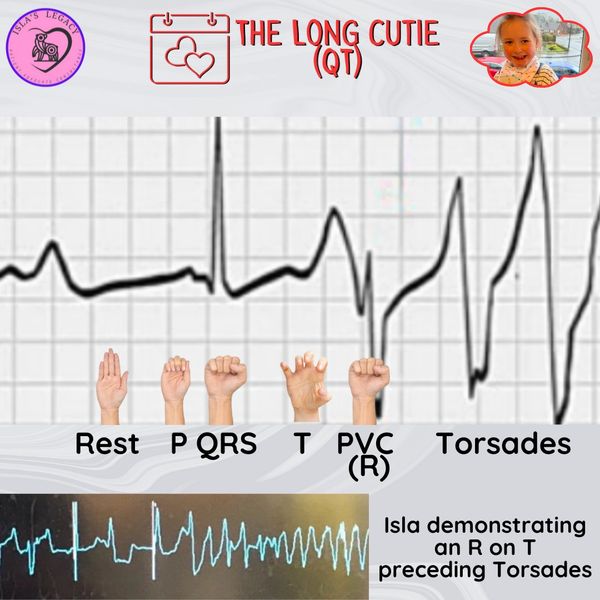Palpitations - A hiccup beat

This is why people will tell you that palpitations aren't a symptom of Long QT... because they happen for so many other reasons, to everyone, whether they have Long QT Syndrome or not.

Ectopic beats aren't like a normal palpitation which, are, as everyone will tell you, are normal.

A little side by side comparison of palpitations and ectopic beats. They might feel the same but they are slightly different.

Early Afterdepolarisations (EADs) happen when the faulty ion channel doesn't tell the ions to stop. When the number of ions inside the cell is more than outside, the gate remains closed.

But when the ions allllll still want to get in, even though the time to get in has really been and gone.

The number of ions outside outweighs the number of ions inside and it causes the gate to reopen.

Now the cell is not stable. It should be closed but it's been prized open.

Once the gate is open, it is vulnerable to all sorts of intruders!

Once the balance of the ions is tipped, it causes the cell to contract again (essentially restart its process back to the beginning) rather than relaxing. Like if you take a deep breath, but restart the breath before you fully exhale (try it).
From ectopic to Torsades

The cell repolarising (restarting the breath) leads to an extra or an irregular beat.

The big danger of an ectopic beat, is when the heart is still relaxing and another beat is triggered. The heart is forced to contract when it is still only half way back to open.

So in the hand demonstration, the hand would never open all the way back, it would go:
Fist, claw, fist.
This means it doesn't relax or have a pause and so the whole rhythm can be thrown out of sync.

The heart’s ventricles start firing chaotically from multiple places. The EADs can trigger a reentrant loop or focal storm. Cardiac cells aren’t isolated—they’re linked by gap junctions, which allow ions (and electrical signals) to pass directly from one cell to the next.
So if one cell has an early afterdepolarisation (EAD)—a rogue electrical bump during repolarisation—it can depolarise its neighbor, especially if that neighbor is also vulnerable (e.g., still in its reset phase).

In Long QT Syndrome, many cells are still repolarising—they’re in a prolonged “reset” phase.
That means:
• They’re more excitable
• They’re less stable
So when one cell fires early, it’s not just a local glitch—it’s a spark in a dry forest.
Think of it like one kid shouting “Go!” before the race referee says “Ready”—others might jump too, even if they weren’t supposed to.

The QRS complexes vary in shape, size, and axis (it is polymorphic VT) because the electricity is coming from all different places in the heart. They twist around the baseline—hence the name “twisting of the points.”

A false start can be contagious!
When one of the cells depolarises early, it can have a domino effect, and the next one, and the next one etc. can also depolarise until the they are all brought back to the starting line again.
